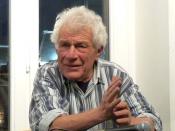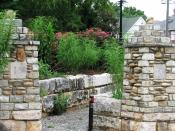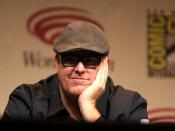Several weeks ago, after spending an afternoon in the library reading passages from Let Us Now Praise Famous Men by James Agee and Walker Evans, vexed at myself for not having the slightest idea what I was going to write in my second essay for the AUB 102 course, I decided it would not be bad to stimulate my brain with some coffee. So I went to the vending machine on the second floor and on top of it I suddenly found what I had been looking for. A red, partly eaten apple was left on the machine, which by itself was not so extraordinary and thought-provoking a fact (perhaps someone just forgot it there, hurrying away with hot coffee), had I not noticed a small brown insect, which was later identified as a cockroach, gnawing on the fruit. In other circumstances I would have shrieked with disgust and moved back, but the images of the poor, downtrodden cotton workers from the period of the Great Depression made me see it in a different light.
I realized that there were some points in common between the brown creature and the central Alabama tenants photographed by Evans and provided with a story by Agee, one of whom is the woman named Annie Mae Gudger, shown in the picture above.
Perhaps at first glance there is nothing that suggests the similarity of the two images, but as John Berger put it in his essay Ways of Seeing, "the way we see things is affected by what we know or believe"(Bartholomae and Petrosky, Ways of Reading 106). Berger implies that the meaning of an image is influenced by its surroundings and the viewers' own ideas and convictions, and gives examples of how the message of a picture can be modified by isolating a...


